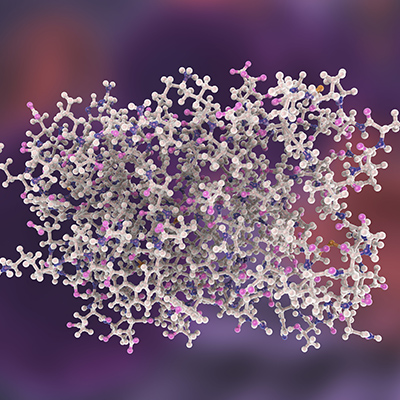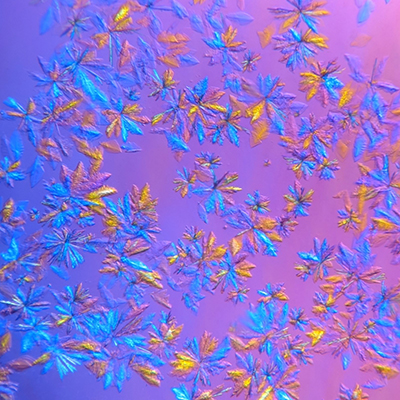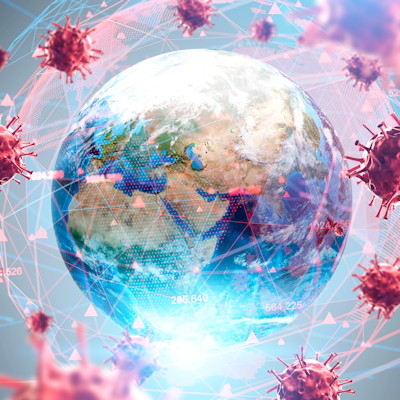August 4, 2020 -- New compounds targeting the SARS-CoV-2 main protease could be potent inhibitors of the coronavirus. Researchers tested various engineered molecules for antiviral activity in an article published in Science Translational Medicine on August 3.
The coronavirus genome contains two overlapping open reading frames (ORF1a and ORF1b) at the 5' end terminal that encode polyproteins pp1a and pp1ab. These polyproteins are processed by a 3C-like protease (also known as main protease) and a papain-like protease, resulting in 16 mature nonstructural proteins. Both the main protease and the papain-like protease are essential for viral replication and therefore are attractive drug targets.
The coronavirus's main protease corresponds to nonstructural protein 5 (nsp5) and is a cysteine protease that has two N-terminal domains. The active site of the protease is within a cleft between the two domains and contains a catalytic cysteine-histidine dyad.
In the past, researchers from Kansas State University and collaborators from Wichita State University developed inhibitors of the main protease in multiple human and animal coronaviruses, including GC376, a dipeptidyl main protease inhibitor that is currently under clinical development. Funds from the U.S. National Institutes of Health have helped the team develop antiviral drugs to treat MERS-CoV and human norovirus infections.
Now, the researchers have demonstrated that new dipeptidyl compounds are potent inhibitors of SARS-CoV-2 in cell culture models. With obtained crystal structures, the team showed that the compounds have the potential for enhanced binding interactions made possible with new inhibitor cap designs. Of the synthesized inhibitors with various cap designs, fluorescence resonance energy transfer (FRET) enzyme assay and cell-based assays showed that the most potent inhibitors were compounds 6e and 6j.
X-ray crystallography also confirmed the mechanism of action of the inhibitors, which involves the formation of a covalent bond between the active site cysteine and the carbonyl carbon of the aldehyde of the inhibitors. Potency was higher in inhibitors that included a P2 leucine residue compared to those with a cyclohexyl-alanine against the MERS-CoV main protease.
Cell culture assays revealed that 6j had the most potent antiviral activity against MERS-CoV, with an EC50 (the concentration of a drug that gives half-maximal response) value of 0.04 µm. Alternatively, 6e showed the most potent antiviral activity against SARS-CoV-2 in the enzyme assay, with an IC50 (concentration of an inhibitor where the response is reduced by half) value of 0.17 µm.
Antiviral effects of compounds 6j and 6e against SARS-CoV-2 were confirmed in cultured primary human airway epithelial cells from three donors who were infected with SARS-CoV-2. Both compounds decreased the viral titers at the tested concentrations.
Lastly, the researchers found that therapeutic treatment of MERS-CoV-infected mice with compound 6j was associated with a reduction in lung viral load and lung pathology. This MERS-CoV mouse model provides proof of concept regarding the therapeutic potential of protease inhibitors for treating human respiratory coronavirus disease, according to the authors.
Overall, the compounds tested were broadly active against the main protease of several coronaviruses, with 6j displaying the highest activity against MERS-CoV and 6e displaying the highest activity against SARS-CoV-2. The authors noted that dipeptidyl compounds can provide a suitable platform for structure-guided design of inhibitors against highly virulent human coronaviruses.
Do you have a unique perspective on your research related to structure-based drug design or virology? Contact the editor today to learn more.
Copyright © 2020 scienceboard.net









